Civil War reenactment highlights Pulaski County’s Old Settlers Day celebration

Waynesville, Missouri, likely saw more Civil War action during its recent Old Settlers Day than it did during the actual Civil War in the 1860s. Pulaski County, which Waynesville is the county seat, experienced skirmishes between the Union Army and Confederate soldiers and sympathizers.
The Union army actually operated a fort atop a hill overlooking the area. Today, a sign commemorates Fort Waynesville. The Old Stagecoach Stop was turned into a military hospital during the war.

During the Old Settlers Day celebration in late July, about 100 reenactors took over Waynesville’s park, setting up several camps, including Union and Confederate detachments, muzzle loaders and civilians.

We met a variety of people who love being reenactors. For one, it allowed her to share family history. Sandra Chambers’ great-grandfather started the Bank of Crocker in 1911. Chambers uses her role as a reenactor to teach people – mainly children – about toys from yesteryear. In example, Chambers shares a story about a toy rocking horse which dates to the 1700s. Early rocking horses where used to teach boys to ride horses. They would learn as small children and graduate to the real deal.

Girls were not allowed to ride on the rocking horses, Chambers said. It was considered unladylike, she said. Women didn’t start riding horses until American women led the way, she said.
Chambers also shares chores from years past, such as churning butter. She remembers making butter the old-fashioned way with her Aunt Tilty, Chambers said.

Some reenactors use their role as shopkeepers to help sell items the actors may need, including hats, clothing patterns and accessories.
As we strolled through the camps, we came upon a site not seen outside the real battlefields of the Civil War – President Lincoln meeting with Union General Ulysses S. Grant. Surrounded by Union army soldiers, the two exchanged pleasantries and discussed the game plan for the day’s events. President Lincoln was portrayed by Lance Mack of Marion, Iowa. Wayne Issleb portrayed General Grant. The Wisconsin resident has played the general for eight years.
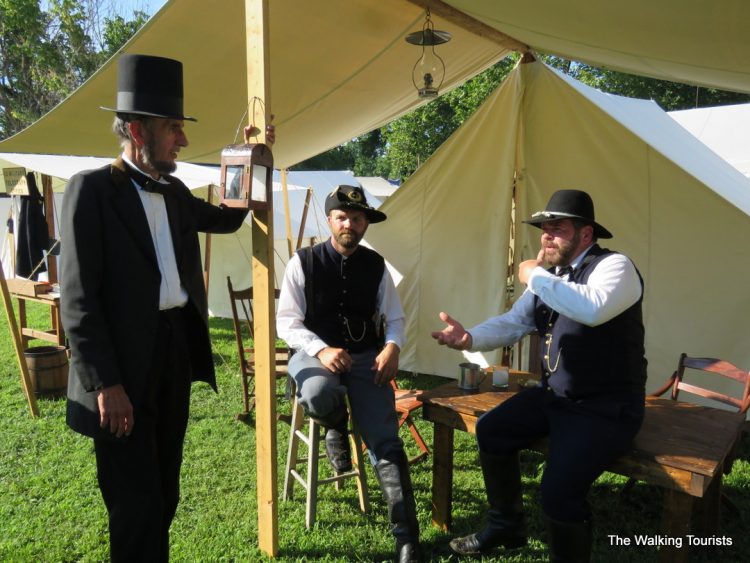
During the meeting, an older man approached the duo. He asked, in a strong southern drawl, if Lincoln was indeed the President. Once assured he was, the man introduced himself to President Lincoln. “The name’s Booth,” he said.
“Are you related to the actor,” the president asked.
“Yessir. You like the theater?”
“Well, I have not been for some time, as I have been fighting a war.”
“Well,” the southerner replied, “You may not want to go.”
The two shook hands and parted ways. I loved how they stayed in character throughout the exchange. The southern reenactor, who hails from Kearney, Missouri, said he likes to tease Lincoln reenactors when he has the chance.

Each camp was set up in realistic fashion. The reenactors strive for accuracy in all aspects of their life, including clothing, sleeping gear, as well as the food they prepare. It’s not unusual for reenactors to spend more than $1,000 on their equipment. And all of it is because they enjoy being reenactors, said Matt Cordoves, who organized the weekend’s events.
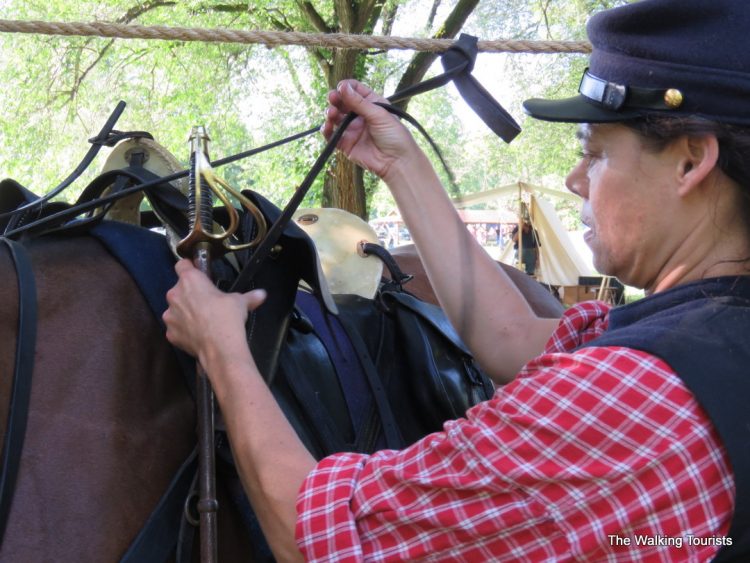
As we toured the camps, every person we spoke with was willing to discuss their role. They strive to help educate people on the true stories of the Civil War. I’ve learned a lot more about the Civil War from talking with people who do a lot of research for their roles.
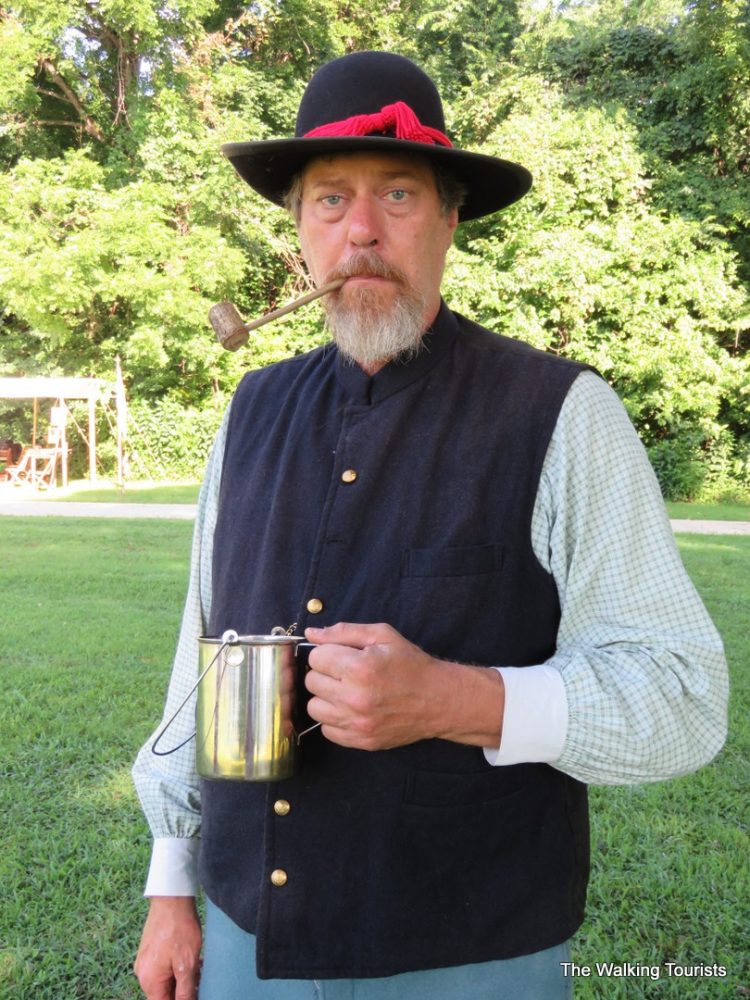
Both sides of the war were represented during the Civil War reenactment. We stopped in both camps. My family history includes ancestors from the south, and it’s believed some fought for the Confederacy. So, based on the accuracy of the war, we covered the southern side, as well.
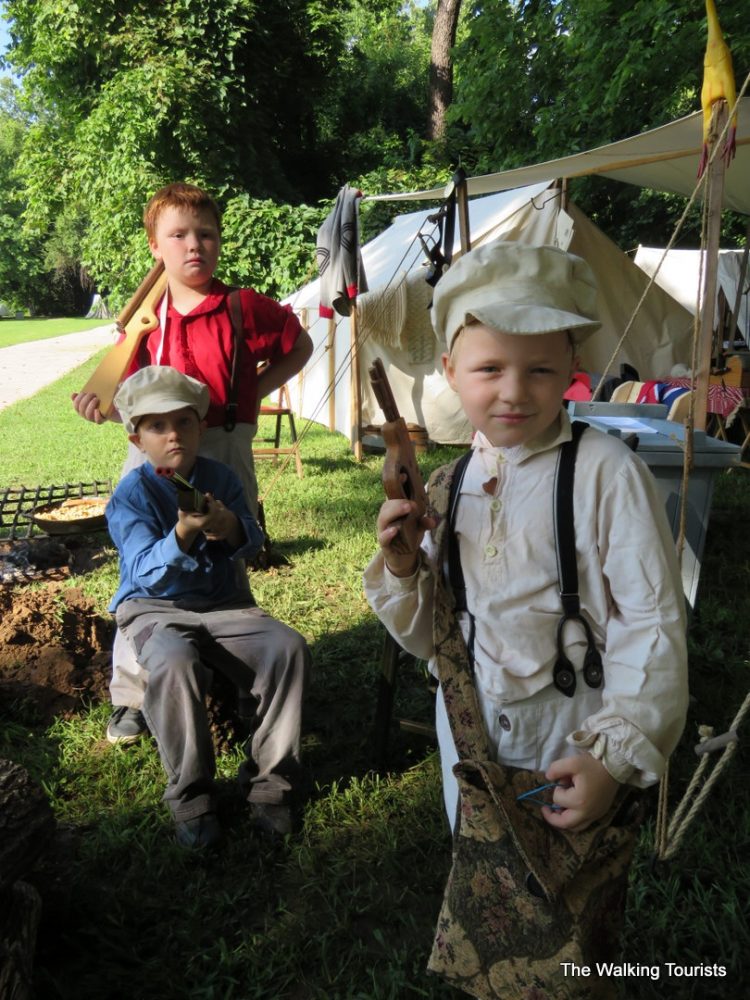
Missouri had the third highest number of battles during the Civil War, behind only Virginia and Tennessee. Missouri also had several guerrilla attacks. The most famous guerrilla leader being William Quantrill. Brothers Jesse and Frank James served under his command.

Union soldiers were busy preparing for the day’s events as we stopped by. We watched formations, horse drills and learned about the cannons being used.

In addition to the military camps, we visited the Kickapoo Trace Muzzleloaders camp. The group represents mountain men and explorers, who settled the country before 1840. The camp focused on life as a muzzleloaders, including fire starting, trapping, hunting, Dutch oven cooking and blacksmithing. During our visit, the men and women of the group were finishing breakfast and preparing for the day, including loading weapons and inspecting their gear.

President Lincoln and General Grant addressed the public during speeches, reminiscent of what they may have talked about during the 1860s. President Lincoln appeared presidential during his speech.

Grant discussed his life – how he didn’t want to attend West Point or serve in the military, or serve as president. But, he had a sense of responsibility and served as needed.
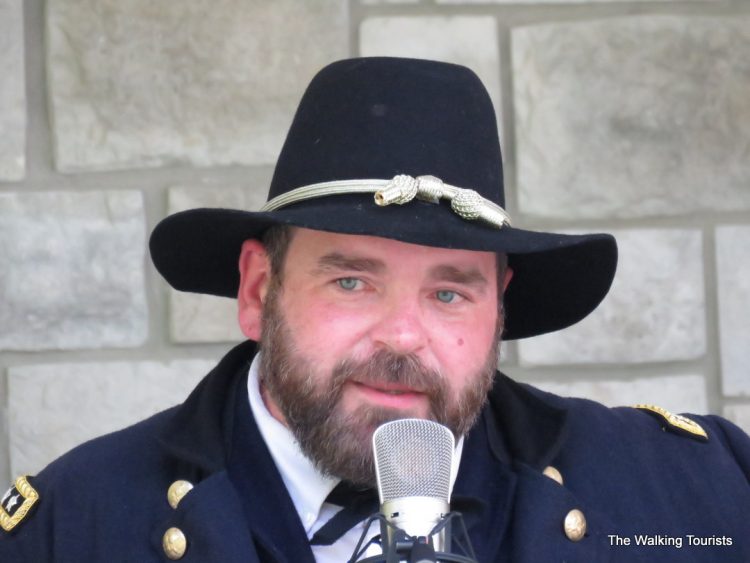
Issleb, in his portrayal as the 18th president, noted Grant’s tomb has the words “Let us have peace,” because he abhorred war. And he hoped the Civil War was the last one fought. Sadly, his dream didn’t come true.

Following the American heroes’ presentations, the audience was entertained with period music pieces performed by the Back Porch Singers, led by Paul Stickley. We enjoyed the performance.
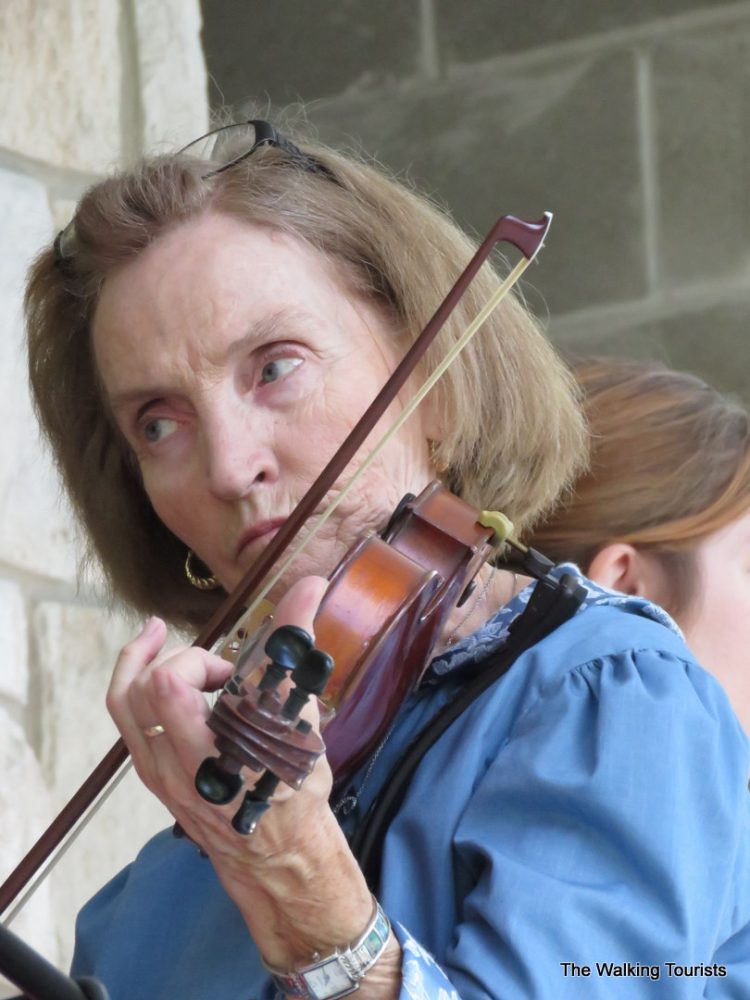
The Back Porch Singers are a family group. Stickley and his group perform around Missouri, including civic, church and social events.
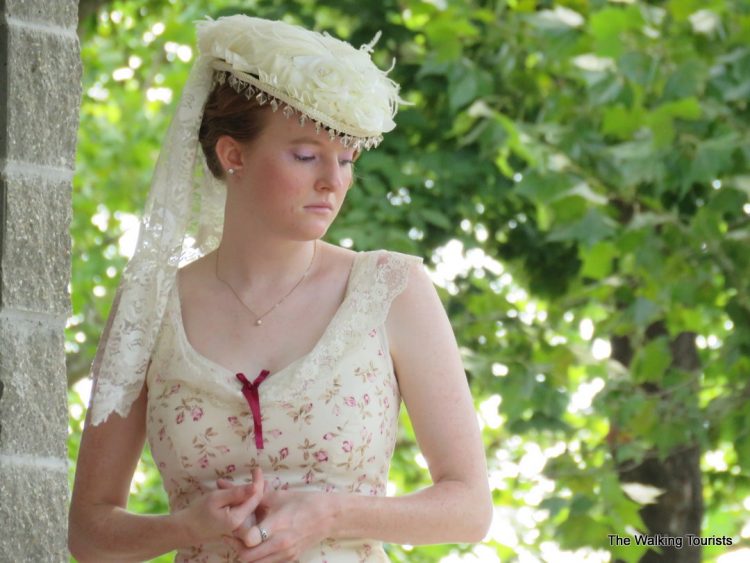
Later in the day, Union and Confederate forces met. It started as a skirmish near the site of Fort Waynesville. As the Union detachment marched its way through the streets of Waynesville, soldiers from both sides engaged in gun fire exchanges.
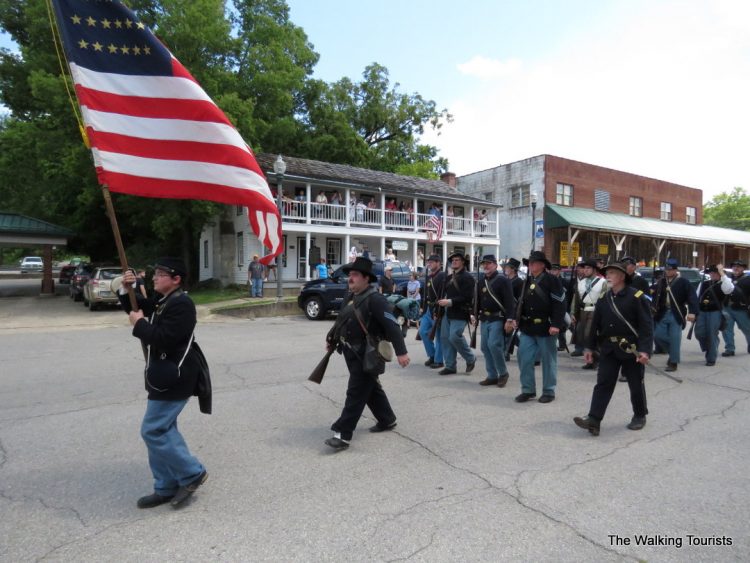
The Union turned away the small group and continued its march. The American flag was carried before soldiers marching down the street in front of the Old Stagecoach Stop building. Onlookers applauded the troops as they passed. Their next stop was the city park, where they knew they would encounter a group of Confederate soldiers determined to take Waynesville.

As the armies gathered for battle, officers on both sides yelled out instructions. Sergeants relayed those orders to the privates and others on the front lines. The Confederates kicked off the fighting with a small horseback attack. The Union held them off.

The Union slowly maneuvered forward, taking aim at its enemy. On the other side, the Confederates stood in line ready to defend their position and start their move forward.
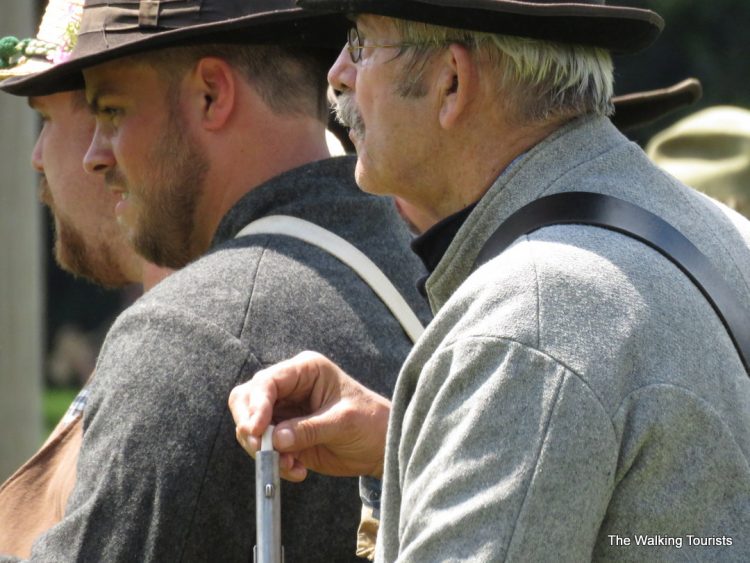
The Union army proved too strong and eventually took control of the battle. After about 30 minutes, the Confederate forces were decimated. The lead officer signaled a surrender. The men and women then met at the center of the battlefield and started planning the next day’s events (which, unfortunately, were rained out).

Again, I remain impressed by the realistic presentation throughout the reenactments we witnessed during the day. The people involved conduct themselves with professionalism. We truly enjoyed ourselves.
The organizers of the Old Settlers Day should make the Civil War reenactment part of the annual event. People seemed to enjoy it.
We recommend visiting www.visitpulaskicounty.org as organizers start updating information for the 2017 events.




